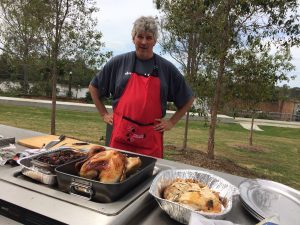France’s Contrôle Sanitaire writes the publication of the results of health checks in the food sector (restaurants, canteens, slaughterhouses, etc.) is a legitimate expectation of citizens that contributes to the improvement of consumer confidence. Foreseen in the Future for Agriculture, Food and Forest Act of 13 October 2014, this measure is part of a move towards greater transparency of State action.
 To which a Brit tweeted @foodgov have been doing this for years, France is now copying the successful “Food Hygiene Rating” scheme.
To which a Brit tweeted @foodgov have been doing this for years, France is now copying the successful “Food Hygiene Rating” scheme.
Oh fuck it.
This is a good point to pause.
Restaurant inspection disclosure goes back to 1924, at which time letter grades were introduced to classify milk in the United States.
Toronto has been doing it since 2000.
So for a Brit to brag to a French about stuff that happened decades ago seems a bit silly, and time for barfblog.com to take a pause.
We don’t want to become recall.net and most of you 100K+ subscribers can figure out how to aggregate news on your own.
Chapman and I started barfblog on a plane trip to Prince George, B.C, where Chapman thought he would be eaten by bears and we saw advertisements for a college student jello thing, but decided we were too old to go.
We went to Vancouver to see our hockey goon friend Kevin Allen, and then to Seattle to see Marler.
Eventually we made our way to Manhattan, Kansas, where I was running away from an ex-wife, a stalking girlfriend and a whole lot of history.
I met a girl and Kansas State University hired me.
 This is all the messy stuff in how science gets done but not really reported.
This is all the messy stuff in how science gets done but not really reported.
After 45 years of working continuously – I started as a golf caddy at nine-years-old, and the movie Caddyshack is historically accurate — I’m going to give it a break
No retirement, no pension, just want to see what else is out there, and see what other ideas I can come up with for others to claim as their own.
Rock, or the barfblog, will never die.
But we need to get back ahead of the curve.
Indulge me some appropriate rock.
Filion, K. and Powell, D.A. 2009. The use of restaurant inspection disclosure systems as a means of communicating food safety information. Journal of Foodservice 20: 287-297.
The World Health Organization estimates that up to 30% of individuals in developed countries become ill from food or water each year. Up to 70% of these illnesses are estimated to be linked to food prepared at foodservice establishments. Consumer confidence in the safety of food prepared in restaurants is fragile, varying significantly from year to year, with many consumers attributing foodborne illness to foodservice. One of the key drivers of restaurant choice is consumer perception of the hygiene of a restaurant. Restaurant hygiene information is something consumers desire, and when available, may use to make dining decisions.
Filion, K. and Powell, D.A. 2011. Designing a national restaurant inspection disclosure system for New Zealand. Journal of Food Protection 74(11): 1869-1874
.
The World Health Organization estimates that up to 30% of individuals in developed countries become ill from contaminated food or water each year, and up to 70% of these illnesses are estimated to be linked to food service facilities. The aim of restaurant inspections is to reduce foodborne outbreaks and enhance consumer confidence in food service. Inspection disclosure systems have been developed as tools for consumers and incentives for food service operators. Disclosure systems are common in developed countries but are inconsistently used, possibly because previous research has not determined the best format for disclosing inspection results. This study was conducted to develop a consistent, compelling, and trusted inspection disclosure system for New Zealand. Existing international and national disclosure systems were evaluated. Two cards, a letter grade (A, B, C, or F) and a gauge (speedometer style), were designed to represent a restaurant’s inspection result and were provided to 371 premises in six districts for 3 months. Operators (n = 269) and consumers (n = 991) were interviewed to determine which card design best communicated inspection results. Less than half of the consumers noticed cards before entering the premises; these data indicated that the letter attracted more initial attention (78%) than the gauge (45%). Fifty-eight percent (38) of the operators with the gauge preferred the letter; and 79% (47) of the operators with letter preferred the letter. Eighty-eight percent (133) of the consumers in gauge districts preferred the letter, and 72% (161) of those in letter districts preferring the letter. Based on these data, the letter method was recommended for a national disclosure system for New Zealand.









